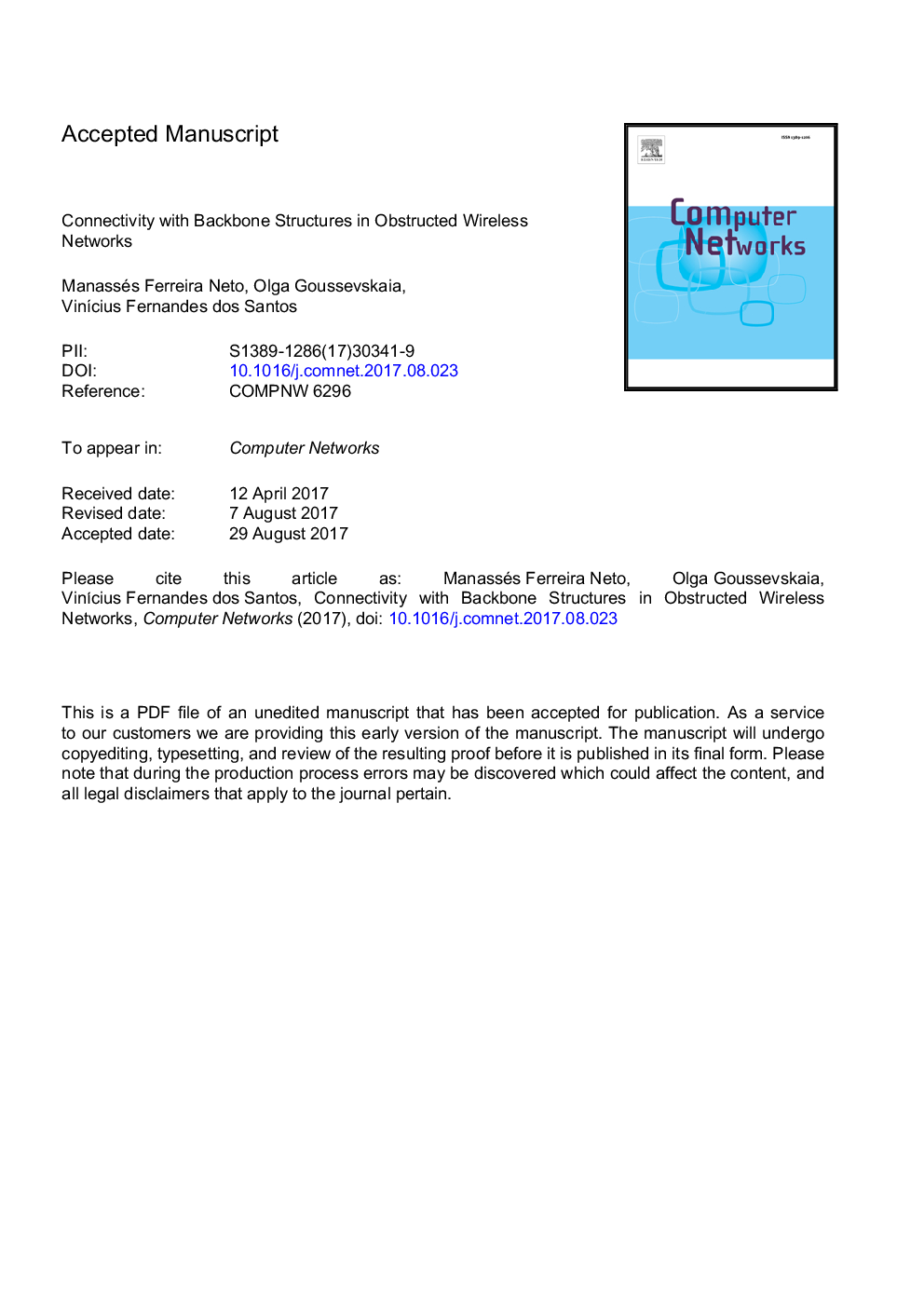| Article ID | Journal | Published Year | Pages | File Type |
|---|---|---|---|---|
| 4954618 | Computer Networks | 2017 | 38 Pages |
Abstract
In this work we consider a wireless ad-hoc network deployed on a finite street grid, where communication between nodes is disrupted by regularly spaced obstacles. The critical transmission range for connectivity in such networks grows with the size of the grid, which might impair the feasibility of low-power wireless technologies in large networks. We therefore analyze how the connectivity of such networks in sub-critical scenarios, where the transmission range is insufficient to establish connectivity, can be improved by introducing a global backbone with a set of access points. We formulate the problem of positioning a minimum number of access points, such that every connected component is covered by at least one access point, and refer to it as the Obstructed Wireless Network Backbone Cover Problem (OWN-BC). We prove that OWN-BC is NP-complete and present a 2-approximation algorithm to find solutions with guaranteed quality. Furthermore, we derive a lower bound on the probability of finding optimal solutions in random network scenarios. Finally, we perform a series of simulations to illustrate the performance of the approximation algorithm and characterize scenarios in which the proposed algorithm obtains optimal solutions in polynomial time.
Related Topics
Physical Sciences and Engineering
Computer Science
Computer Networks and Communications
Authors
Manassés Ferreira Neto, Olga Goussevskaia, VinÃcius Fernandes dos Santos,
